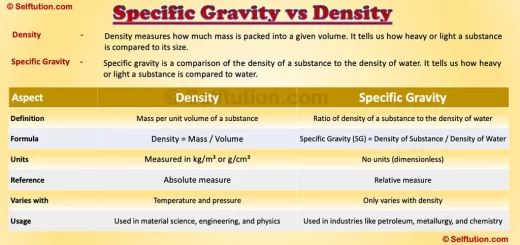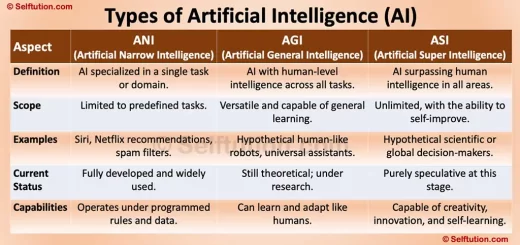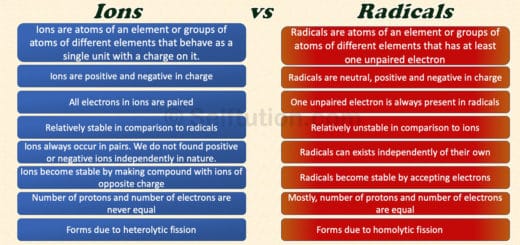Types of Artificial Intelligence (AI) with Examples
Artificial Intelligence (AI) is the simulation of human intelligence in machines that can think, learn, and perform tasks. Different types of Artificial Intelligence (AI) vary based on their capabilities and applications.
AI is rapidly transforming industries. Therefore, understanding these different types of AI is crucial for grasping its impact.
The types of Artificial Intelligence include
- Artificial Narrow Intelligence (ANI),
- Artificial General Intelligence (AGI), and
- Artificial Super Intelligence (ASI).
This article explores the types of Artificial Intelligence, highlighting their differences and providing examples. Let’s dive into ANI, AGI, and ASI in detail.
What is Artificial Intelligence (AI)?
Before diving into the types of Artificial Intelligence, let’s establish what AI is. Artificial Intelligence refers to the simulation of human intelligence in machines that are programmed to think and learn. AI systems can analyze data, make decisions, and perform tasks that typically require human cognition.
We generally categorize AI systems based on their level of intelligence and ability to perform tasks. This categorization gives us the three main types of Artificial Intelligence: ANI, AGI, and ASI.
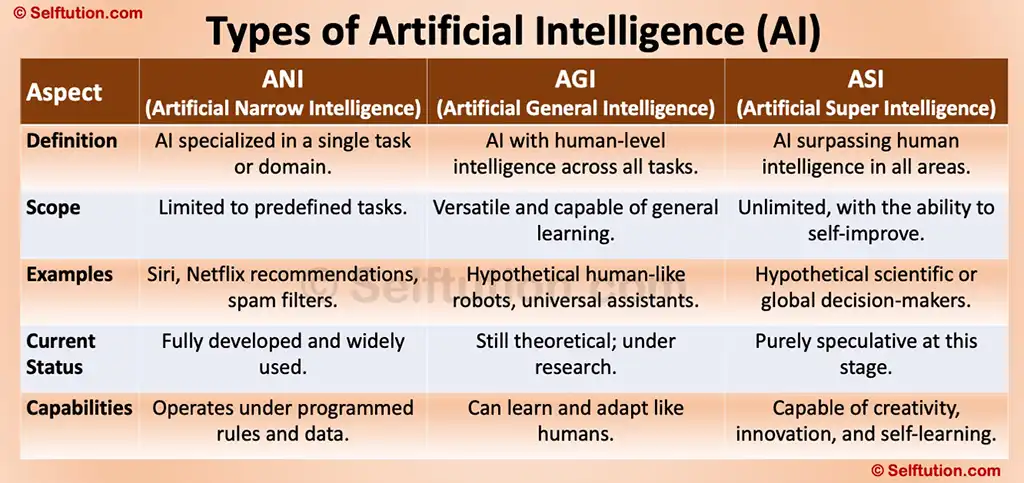
Types of Artificial Intelligence (AI) with Examples
Types of Artificial Intelligence (AI): Artificial Narrow Intelligence (ANI)
Artificial Narrow Intelligence, often referred to as Weak AI, is the most common form of AI in use today. ANI is designed to perform a single task or a narrow range of tasks exceptionally well. However, it cannot operate beyond its programmed capabilities. ANI does not possess the ability to think or reason like a human—it is purely task-oriented.
Characteristics of ANI:
- Specialized in a single domain.
- Operates under predefined rules and algorithms.
- Cannot adapt to tasks outside its scope.
Examples of ANI:
- Virtual Assistants: AI-powered tools like Siri, Alexa, and Google Assistant are classic examples of ANI. They answer questions, play music, or control smart home devices, but their functionality remains limited to pre-programmed capabilities.
- Recommendation Systems: Platforms like Netflix or Amazon use ANI to recommend movies or products based on user preferences.
- Spam Filters: Email services use ANI to identify and filter out spam messages effectively.
- Self-Driving Cars: While still evolving, the AI systems in autonomous vehicles focus on specific tasks like object detection, lane following, and navigation—making them ANI.
ANI is revolutionary in its own right, but it represents the lowest level of AI sophistication.
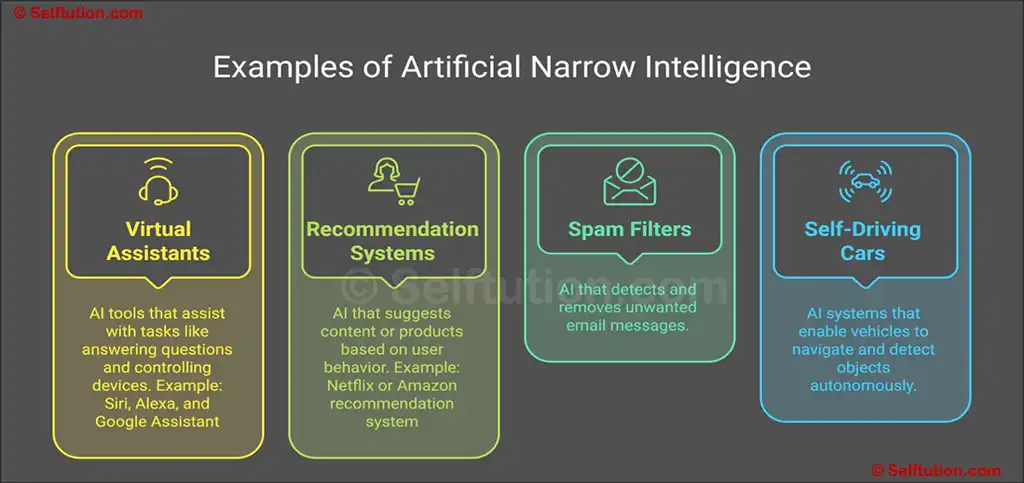
Examples of Artificial Narrow Intelligence (ANI)
Types of Artificial Intelligence (AI): Artificial General Intelligence (AGI)
Artificial General Intelligence, or Strong AI, refers to systems capable of mimicking human intelligence across a wide range of activities. AGI can understand, learn, and apply knowledge in diverse domains, much like a human being. While ANI excels at specific tasks, AGI is envisioned as an AI system that can perform any intellectual task a human can do.
Characteristics of AGI:
- Generalized learning abilities.
- Can transfer knowledge from one domain to another.
- Possesses reasoning, problem-solving, and decision-making capabilities comparable to humans.
Current Status of AGI:
As of now, AGI remains theoretical and has not been realized. Researchers and technologists are working on developing AGI, but creating a system with true human-like intelligence is a complex challenge that involves neuroscience, machine learning, and computational power.
Hypothetical Examples of AGI:
- Human-like Robots: Imagine a robot that can simultaneously hold a conversation, cook a meal, and solve a mathematical problem without being explicitly programmed for each task.
- Universal Personal Assistants: An AGI-powered assistant could understand context, emotions, and complex tasks, adapting seamlessly to any requirement.
Types of Artificial Intelligence (AI): Artificial Super Intelligence (ASI)
Artificial superintelligence represents the hypothetical future of AI—where machines surpass human intelligence in every aspect. ASI systems would have the ability to outperform humans not only in specific domains but also in creativity, decision-making, and emotional intelligence.
Characteristics of ASI:
- Operates at a level far beyond human intelligence.
- Capable of self-improvement.
- Demonstrates unparalleled problem-solving, innovation, and adaptability.
Implications of ASI:
While ASI is still purely speculative, it raises both excitement and concern. On one hand, ASI could revolutionize science, medicine, and technology. On the other hand, it poses ethical and existential risks, as such intelligence could become uncontrollable.
Hypothetical Examples of ASI:
- Scientific Revolutionaries: An ASI system could solve complex problems like curing cancer, reversing climate change, or exploring the universe far more efficiently than humans.
- Global Decision-Makers: ASI could potentially manage global economics, governance, and social issues better than any human institution.
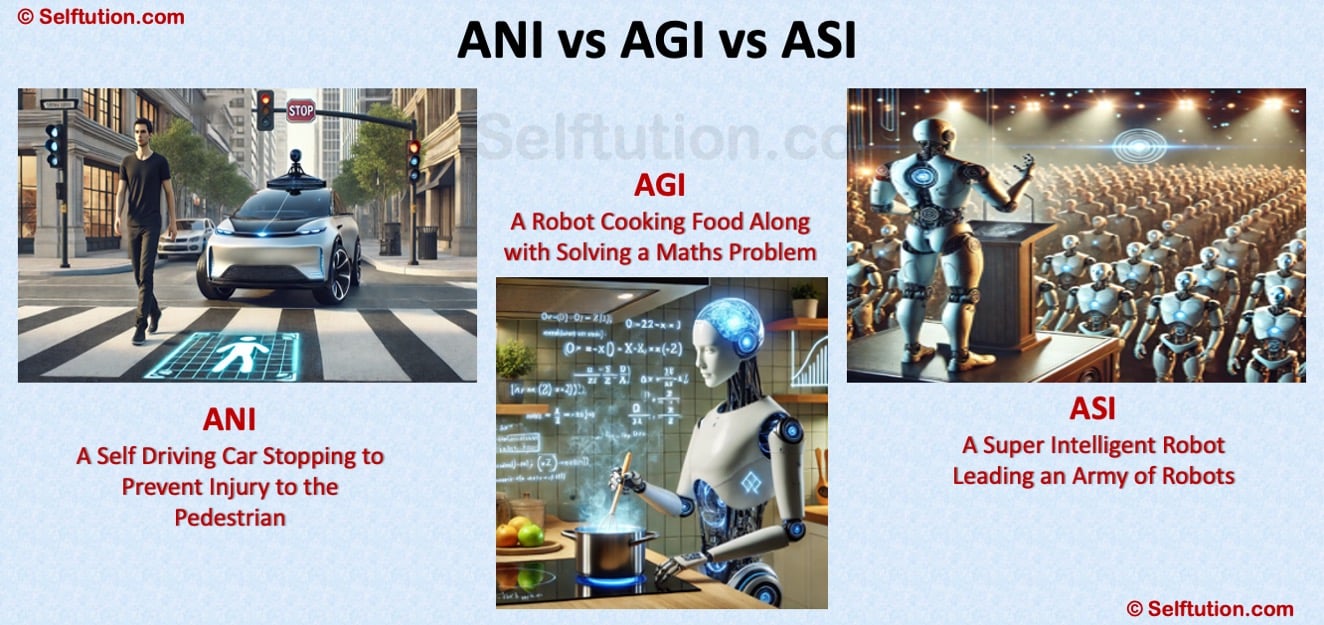
ANI vs AGI vs ASI with Examples
Key Differences Between Types of Artificial Intelligence (AI)
Below are the key differences between Artificial Narrow Intelligence (ANI), Artificial General Intelligence (AGI), and Artificial Super Intelligence (ASI):
- Definition:
- ANI specializes in a single task, AGI possesses human-level intelligence across all tasks, and ASI surpasses human intelligence in all areas.
- Scope:
- ANI is limited to predefined tasks, AGI is versatile and capable of general learning, and ASI is unlimited with the ability to self-improve.
- Examples:
- ANI includes Siri, Netflix recommendations, and spam filters; AGI refers to hypothetical human-like robots and universal assistants; ASI represents hypothetical scientific or global decision-makers.
- Current Status:
- ANI is fully developed and widely used, AGI remains theoretical and under research, while ASI is purely speculative at this stage.
- Capabilities:
- ANI operates under programmed rules and data, AGI can learn and adapt like humans, and ASI is capable of creativity, innovation, and self-learning.
The Journey of AI Development
As we progress through these stages, AI’s capabilities evolve significantly. Currently, we are firmly in the age of ANI. The transition to AGI, though challenging, holds the promise of transforming AI into a powerful and generalized tool. Beyond AGI lies ASI, which remains a distant and speculative vision.
Conclusion
Artificial Intelligence is a dynamic and evolving field with immense potential. From the task-specific capabilities of Artificial Narrow Intelligence (ANI) to the speculative horizons of Artificial General Intelligence (AGI) and Artificial Super Intelligence (ASI), each stage represents a leap forward in technology.
While ANI is already transforming industries, AGI and ASI remain challenges and opportunities for the future. Understanding the types of Artificial Intelligence is key to navigating this transformative technology and leveraging it for global betterment.
You may also like…... Types of Chemical Reactions in Chemistry

